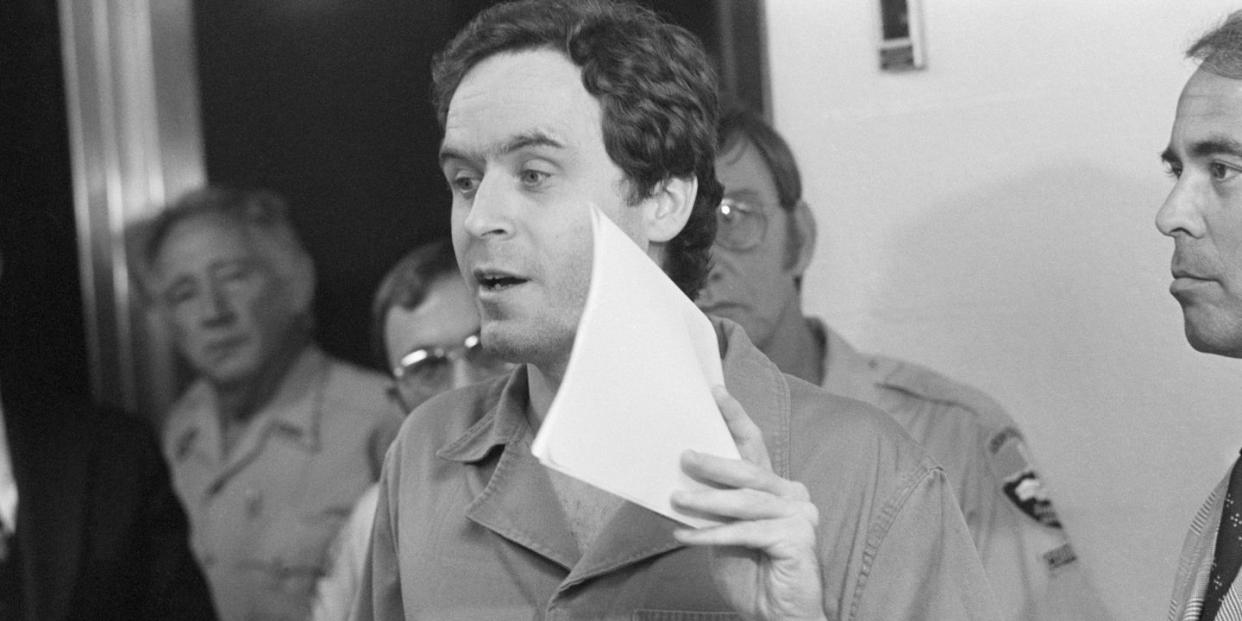Ted Bundy Might Have Murdered Dozens More People than We Thought

- Oops!Something went wrong.Please try again later.
"Hearst Magazines and Yahoo may earn commission or revenue on some items through these links."
Ted Bundy is one of America’s most notorious serial killers, having murdered at least 20 young women and girls across the United States over a four-year period starting in 1974. He confessed to 36 slayings before police apprehended him for good in 1978 at age 31.
But an Iowa State criminologist believes that might be only a fraction of Bundy’s actual victim count.
Matt DeLisi, who has a doctorate in sociology, is a distinguished professor at Iowa State and coordinator of the university’s Criminal Justice Studies Program. In Ted Bundy and the Unsolved Murder Epidemic, he writes that Bundy likely murdered more than 100 people and started his killing spree in adolescence.
“Bundy drops a lot of clues that there were way more murders than the official victim count of around 30 young women and girls,” DeLisi says in a news release. “And the pacing and confidence with which he’s killing between 1974 and 1978 indicates there’s no way he could have just started. To me, it really reflects someone who had been doing this for years.”
DeLisi has written more than 400 scholarly works on topics in the social, behavioral, and forensic sciences, according to the university. Combining his 25 years as a researcher and consultant on violent criminals with stories from people who knew Bundy, he wrote about how the serial killer showed signs of psychopathy as early as 3 years old.
Bundy—who was born on November 24, 1946, in Burlington, Vermont—would place knives around his sleeping aunt and watch her, Delisi writes, as well as pull apart mice in the woods and try to drown others while swimming or boating.
Bundy had “no sense of remorse, guilt, embarrassment, or shame for his violent transgressions,” which DeLisi says in the release are behaviors shared by other serial killers of the era like Samuel Little and Rodney Alcala.
DeLisi’s book, which came out in February, discusses reasons why unsolved murders increased by roughly 80 percent between 1960 and the early 21st century, and how this might have benefitted Bundy. Highways and interstates often made it easer for criminals to find victims and evade detection, and authorities struggled to share information about wanted subjects and missing persons among jurisdictions.
Officials were “woefully unequipped” to locate, detain, or even identify Bundy, DeLisi says in the release. They also didn’t have the help of DNA evidence, which came to prominence in the 1980s.
Bundy was executed by electric chair at Florida State Prison in Raiford on January 24, 1989, after receiving the death penalty three times for the 1978 murders of two Chi Omega sorority members at Florida State University and 12-year-old Kimberly Leach.

